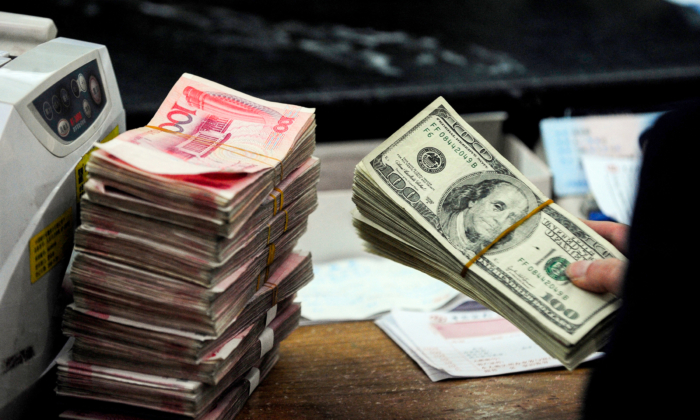Beijing needs to prepare for it: Trump is likely to increase U.S. tariffs on Chinese imports.
Commentary
When Donald Trump assumes the presidency in January, the anticipated tariffs on Chinese imports will likely follow shortly. These tariffs will have a significant impact on China’s already struggling economy.
The extent of this impact will largely depend on how foreign exchange markets react. Movements in these markets could help mitigate any inflationary effects in the United States and the levels of exports in China.
Trump has pledged to impose broad tariffs ranging from 10 percent to 20 percent on all imports to the United States, and even higher tariffs between 60 percent and 100 percent on imports from China. While these figures may seem drastic, they are actually less extreme when put into perspective.
Prior to the election results being finalized, American buyers in China had already begun to take action. In the weeks leading up to the election, American retailers and manufacturers started to accelerate their purchases of Chinese finished goods and inputs to ensure they arrived in the country before any additional costs from tariffs were imposed. This behavior mirrors what happened in 2018 in anticipation of the initial round of Trump’s tariffs. This time, shipping rates have not yet reacted, but the recent increase in Chinese exports is likely influenced by this factor. While this immediate demand spike may boost Chinese exports temporarily, the subsequent inventory buildup could lead to a sharp decrease after the tariffs take effect, magnifying the impact of the tariffs for a period. It may take several months post-levy implementation to fully assess the impact on trade flows.
Once the tariffs take effect, their impact on China and the United States will be heavily influenced by reactions in foreign exchange markets. In 2018, the Chinese yuan experienced a sharp decline against the U.S. dollar following the implementation of Trump’s tariffs. This depreciation continued for several months, resulting in a 10 percent decrease in value against the dollar throughout 2018 and 2019. This currency adjustment reduced the dollar price of Chinese goods for American consumers enough to offset approximately two-thirds of the increased costs from the tariffs. Consequently, American purchases of Chinese goods remained robust, with volumes actually increasing by around 12 percent annually in 2018 and 2019.
However, this meant that Chinese producers received fewer dollars for their products post-tariffs and currency fluctuations, leading to a decline in revenues and profits despite higher sales volumes. Ultimately, the Chinese, rather than American buyers, bore the burden of Trump’s tariffs. Due to the lowered dollar price of Chinese goods, predictions of inflation at the time proved inaccurate. The affordability of Chinese goods, even after the tariffs were implemented, prevented Trump’s goal of halting the flow of Chinese imports.
Given the higher tariffs expected this time, a similar offset would necessitate a more significant yuan devaluation. A potential 18–20 percent drop in the yuan’s value may be required, bringing it to approximately 8.5 to the dollar. Thus far, there has been no substantial movement in the yuan’s value in this direction, and it remains uncertain if Beijing authorities will permit such a depreciation. Recent efforts to resist yuan devaluation due to concerns about capital flight from China may need to be reconsidered to maintain export levels essential for the economy. Failure to devalue the yuan could result in a substantial decrease in Chinese exports to the United States, leading to inflationary consequences for Americans, unlike the scenario observed in 2018 and 2019. The response of the currency markets will determine the final outcome.
Views expressed in this article are opinions of the author and do not necessarily reflect the views of The Epoch Times.
Please rewrite the following sentence:
“The cat sat lazily in the sun, enjoying the warmth on its fur.”
Rewritten sentence: The lazy cat basked in the warmth of the sun, delighting in the feeling on its fur.
Source link







